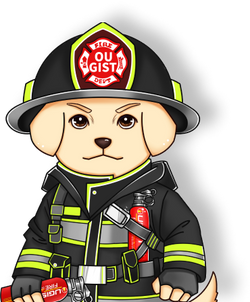Introduction: Alcohol, a common household item, can have unexpected consequences when not handled properly. In particular, 75% alcohol, commonly used for disinfection purposes, can be highly flammable and pose a serious fire hazard. In this blog post, we will explore the potential risks associated with 75% alcohol and discuss essential fire safety measures for self-rescue in case of an indoor fire.
The Flammability of 75% Alcohol: 75% alcohol, also known as isopropyl alcohol, is a potent disinfectant widely used for cleaning surfaces and medical equipment due to its ability to kill germs and bacteria effectively. However, it is essential to recognize that alcohol, at this concentration, is highly flammable. When exposed to an open flame, sparks, or high temperatures, 75% alcohol can ignite quickly, leading to an indoor fire.

Fire Safety Measures for Self-Rescue:
-
Prevention: Preventing a fire in the first place is the most effective way to ensure safety. Here are some preventive measures:
a. Storage: Store 75% alcohol and other flammable liquids in a cool, well-ventilated area away from direct sunlight and any heat sources.
b. Containers: Always use tightly sealed containers designed for flammable liquids to store alcohol and avoid using open or loosely sealed ones.
c. Awareness: Educate everyone in the household or workplace about the flammability of alcohol and the potential risks associated with its misuse.
-
Fire Safety Equipment: Having the right fire safety equipment readily available can make a significant difference during an emergency:
a. Fire Extinguisher: Keep a fire extinguisher in accessible locations, such as the kitchen or near potential fire sources. Make sure everyone knows how to operate it correctly.
b. Smoke Detectors: Install smoke detectors throughout the premises, particularly in sleeping areas. Regularly check and replace batteries to ensure they function correctly.
-
Fire Evacuation Plan: Develop and practice a fire evacuation plan with all members of your household or workplace. Assign specific roles and responsibilities to ensure a smooth and organized evacuation in case of a fire.
-
In Case of Fire: If a fire does break out, here are the steps to follow for self-rescue:
a. Alert Others: Immediately notify anyone in the vicinity of the fire and assist in their evacuation if possible.
b. Call for Help: Dial the emergency services number (e.g., 911) to report the fire and provide accurate information about the location and situation.
c. Escape Safely: If the fire is small and contained, you can try to use a fire extinguisher to put it out. However, prioritize your safety and evacuate the building if the fire is spreading rapidly or uncontrollable.
d. Stay Low: If there is smoke, stay close to the ground where the air is less toxic.
e. Do Not Use Elevators: Always use the stairs during a fire evacuation, as elevators may malfunction during a fire.

Conclusion: While 75% alcohol is a useful disinfectant, its flammability demands utmost caution. By implementing fire prevention measures, having the right safety equipment, and practicing a fire evacuation plan, you can significantly reduce the risk of an indoor fire and ensure a safe self-rescue in case of an emergency. Remember, fire safety is everyone's responsibility, and being prepared can make a life-saving difference.


